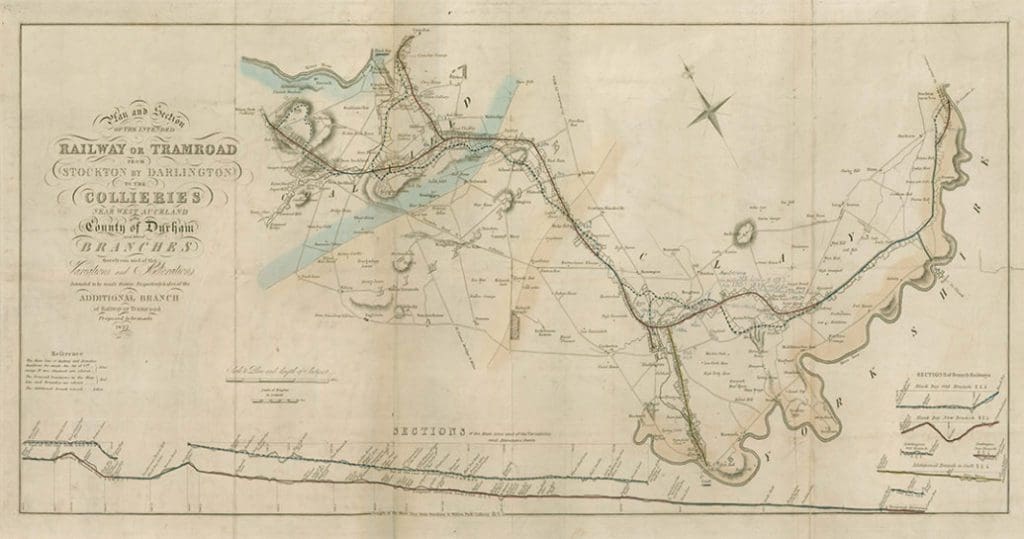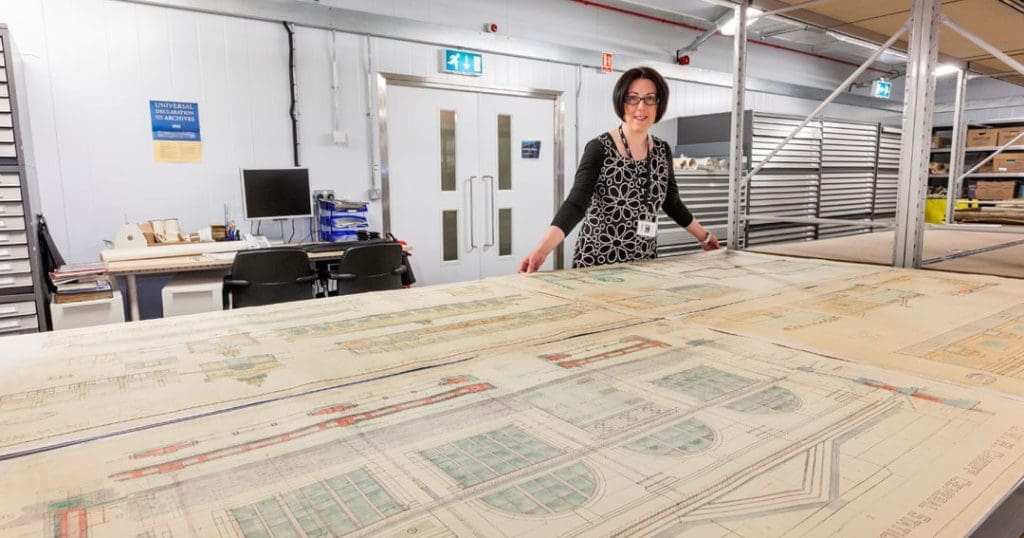This Christmas, Network Rail is sharing one of the railway’s most historically important artefacts with the world.

The rediscovery this year of a notebook written by ‘father of the railways’ George Stephenson enabled the public to see remarkable plans of the birth of the passenger railway for the first time.
John Page, a records assistant at Network Rail’s archive in York, found the original plans for the for the Stockton and Darlington Railway – the world’s first passenger railway to use locomotives – by chance. It was the first time anyone had seen the notebook in more than 50 years.
Enjoy more Heritage Railway reading in the four-weekly magazine.
Click here to subscribe & save.
It was on display at The National Railway Museum in York from 27 September – the 193rd anniversary of the opening of the Stockton and Darlington line – until 19 December.
Now, for the first time, the document is available to view online.
Vicky Stretch, an archivist at Network Rail, explains why the notebook is an integral part of the company’s heritage:
“The Network Rail archive is full of treasures and every now and again we turn up something that is truly remarkable. Finding George Stephenson’s notebook in our registry of deeds was one of those moments.

“We are very happy to be able to provide a digital copy of George Stephenson’s notebook, so that it can be read and enjoyed by people around the world who are interested in the history and development of the railway.
“The Network Rail registry of deeds is a huge collection of documents relating to the legal administration of the railway estate. It contains over two million documents title deeds, maps and plans, agreements, letters and reports, all of which give us the legal evidence as well as the history of how the railway was planned.
Vicky at the Network Rail archive – home to a wealth of railway history
“It describes how the land on which to build was acquired, how agreements with landowners around boundaries and rights of way were made and where the tracks of the ‘permanent way’ were to be laid out.
“The George Stephenson notebook forms part of the North Eastern Railway ‘muniments collection’, which contains the title deeds, agreements and reports relating to land, property and development for all those early railway companies that came together to form the North Eastern Railway Company from 1854. You can see the stamp that says the document was once held in their ‘Muniments Room’ on page two.
George Stephenson, ‘father of the railways’
“Network Rail has inherited these documents because we are a successor body to the North Eastern Railway. George Stephenson’s notebook analyses the route of the railway between Stockton and West Auckland (via Darlington) as well as the Darlington and Yarm branch lines, all of which are still part of Network Rail’s operational estate. Together, these documents chart the ownership, development and legal administration of the railway infrastructure we own, develop and maintain today.
“The report is kept with the other North Eastern Railway muniment documents, all stored safely in our temperature and humidity-controlled environment so that they are available when we need to establish the history of a line, the land and property that was bought, agreements entered into and construction methods used.”
Advert
 Enjoy more Heritage Railway reading in the four-weekly magazine. Click here to subscribe.
Enjoy more Heritage Railway reading in the four-weekly magazine. Click here to subscribe.




